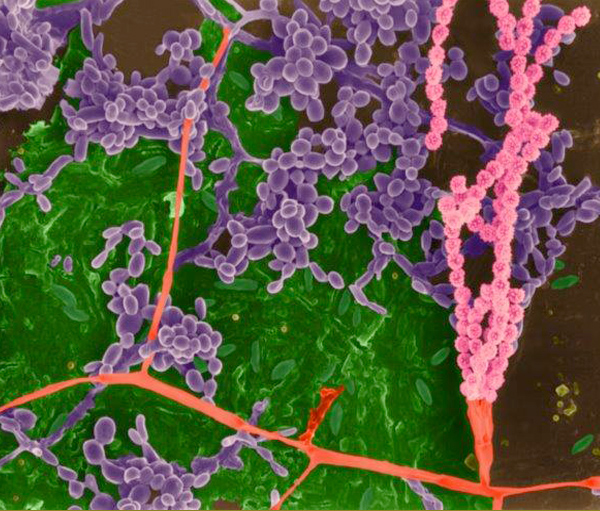
© Dennis Kunkel Microscopy
Home Resources Pathogens What is Leptospira interrogans?
What is Leptospira interrogans?

© Dennis Kunkel Microscopy
Leptospira interrogans is a bacterial species that contains over 200 pathogenic serovars. These pathogenic bacteria, commonly referred to as Leptospires, are the infectious agents that cause the zoonotic disease Leptospirosis. This disease is known to affect both humans and animals.
What diseases are caused by Leptospira interrogans?
Leptospirosis is known by many other names including Weir's disease, Canicola fever, Hemorrhagic jaundice, Mud fever, and Swineherd disease. Clinical illness, generally occurring in two stages (febrile and immune), lasts from a few days to three weeks or longer. The febrile stage begins with flu-like symptoms including fever, chills, myalgia, and intense headache. The first phase normally resolves after four to nine days and the patient is briefly asymptomatic before the second phase begins, which is characterized by meningitis, liver damage, jaundice, and renal failure. Because of the wide range of symptoms the infection is often wrongly diagnosed as meningitis, encephalitis, or influenza. The severity of illness depends on the infecting serovar as well as the host. The same serovar may cause mild disease within one host and severe disease within another. Case fatality is low but increases with advancing age and may reach 20% or more in those with jaundice or kidney damage.
Who is more susceptible to infection from Leptospira interrogans?
All individuals are susceptible to infection. Serovar-specific immunity follows infection or immunization.
Epidemiology of Leptospira interrogans
Leptospirosis, transmitted by the urine of infected animals, occurs worldwide but is most common in temperate or tropical climates. Leptospira organisms have been found in cattle, pigs, horses, dogs, rodents, and wild animals. Humans become infected through contact with water, food, or soil containing urine from these infected animals. This may happen by swallowing contaminated food or water, through contact of the skin (especially if abraded), or through contact with mucosal surfaces such as the eyes or nose. Outbreaks are usually caused by exposure to contaminated water.
Incubation Period
Usually 10 days, with a range of 2-30 days.
Diagnosis of Leptospirosis
The diagnosis of leptospirosis is made by culture of the bacterial organism Leptospira from infected blood, spinal fluid, or urine. Rising Leptospira antibody levels in the body are also an indication of infection.
Treatment of Leptospirosis
Leptospirosis is treated with antibiotics, which should be given early in the course of the disease to reduce duration of fever and hospital stay. Intravenous antibiotics may be required for persons with more severe symptoms. Severe liver and kidney manifestations of the infection may require intensive medical care and possibly dialysis treatment.
Contact EHA Consulting Group today for more information about how we can assist your company.